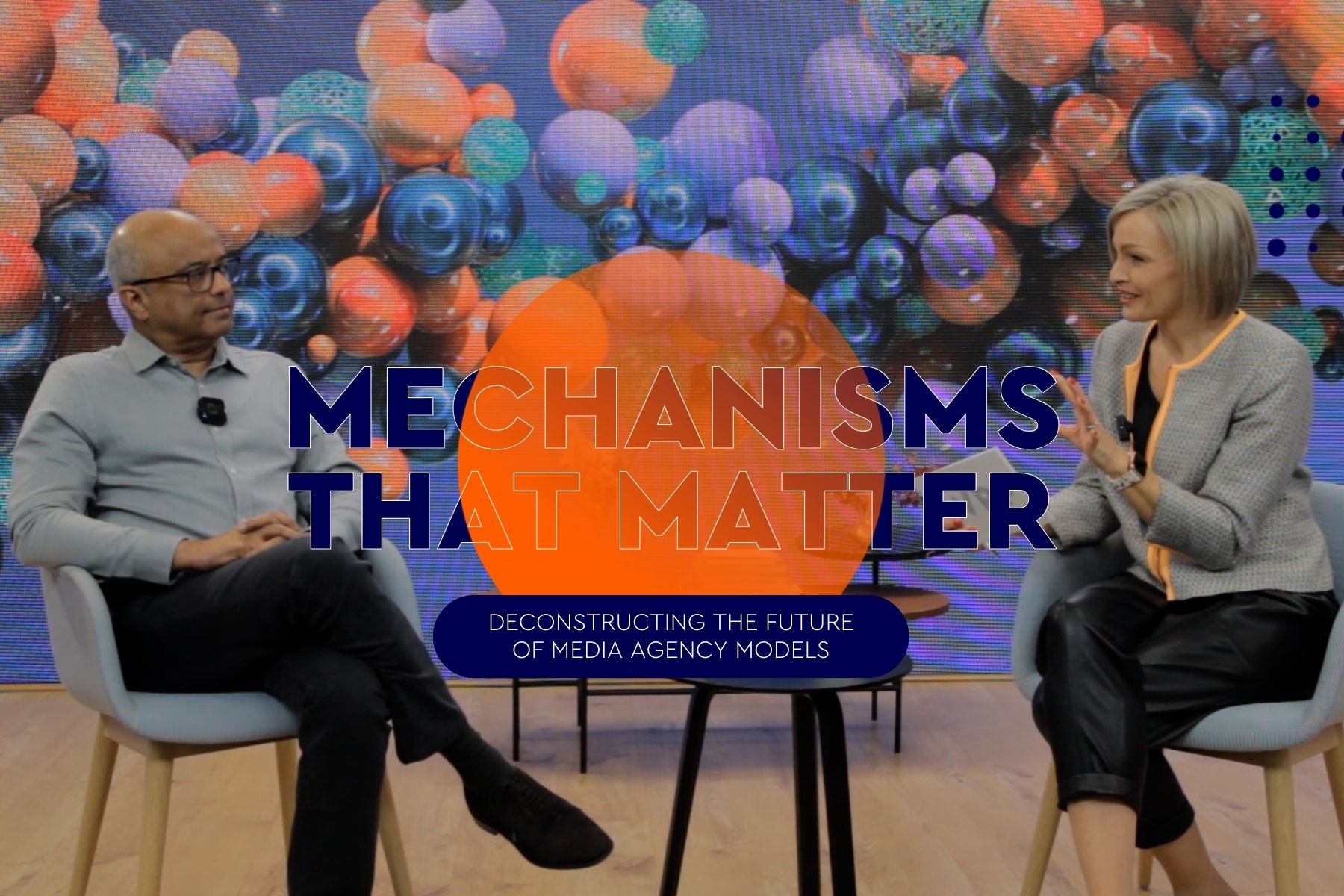Inclusion champions: Jacqui Canney and Tripti Lochan
The magic of multicultural, multigenerational, multifaceted workforce
Show this article in Chinese, French, Portuguese (BR), Spanish
To coincide with the meeting of WPP’s new global Inclusion Council in September, and National Inclusion Week across the UK, WPP is bringing together 12 changemakers from across the network. These individuals are driving key conversations around inclusion and diversity and the industry-wide agenda forward. Across six conversations they discuss action, initiatives, and the power of advertising and marketing to create change in wider society.
Jacqui Canney, WPP’s Global Chief People Officer, and Tripti Lochan, co-CEO of VMLY&R Asia, discuss the importance of a diverse talent pipeline, and the competitive advantage of a multigenerational and multi-experience level company.
Jacqui Canney, Global Chief People Officer, WPP: Inclusion and diversity is something that has been important to our CEO, Mark Read, since I first met him, so it's not suddenly a new focus area for me, but the times and current climate have accelerated the pace with which we need to make progress. The strategy has been built to drive outcomes that make all of our people – over 100,000 – feel like they're included and that we have a diverse organisation. It's made up of people in over 100 countries, so it’s also understanding that inclusion and diversity means somewhat different things to different people. Fundamentally, what I believe is that if we can have an inclusive organisation, it means that whatever your ethnicity, whatever your gender, whatever makes you authentically you, we need to create an environment where people can feel like they can come to work and be themselves.
We've recently instituted diverse interview slates. That means when you are hiring or looking to fill a job on your team, as a team leader, you need to get a slate of people that are diverse. That should widen, hopefully, the opportunity for people (that maybe you didn't know to be on the slate) to get a fair shot at the job. To make it even, I'd say a better process is that we're asking for the interviewers to be diverse too, so that if, for example, I'm interviewing or you're interviewing for a job, we don't come across only men. We want to meet people who look like us, and be able to see a role model potentially on that team.
Tripti Lochan, co-CEO, VMLY&R Asia (She / Her): I totally get the nuances you mention. Each country in Asia has its own version of the fight that minorities are facing. Because of this, we have started an initiative called ‘Brave Questions, Safe Spaces’, which is a springboard for VMLY&R's offices all around Asia to share, learn, support, and understand each other's struggles better, figure out how can we better navigate the workplace, and make a real impact in the world.
I think diverse interview slates are a great idea and I also think we need to make sure that the biggest billboards we have of our culture as an organisation, are our employees. If we treat diversity with respect in our own work environments, that's the first thing that gets around. Nobody joins an organisation without doing some kind of a reference check, talking to your friend's friend, or going on social media. So, respecting our employees and their choices is the first thing that we do.
Also, something we're working on with HR in our own organisation is to set targets around diversity ratios. We do that already in terms of gender, to ensure that there are a percentage of women at every level. That needs to go further and start thinking beyond just gender diversity.
I think we need to make sure that the biggest billboards we have of our culture as an organisation, are our employees. If we treat diversity with respect in our own work environments, that's the first thing that gets around.
JC: Another valuable lesson we actually learned this summer came about because we were going to cancel our intern programmes (due to COVID-19). Normally, a class of about 300 students, in a variety of stages in their academic career, would join us in person throughout the summer. Rather than cancel this altogether we worked swiftly to think about what we could do as an online experience.
So, we created a virtual series called the NextGen Leaders programme. We thought it would cater for maybe 300 people. It turned out to be almost 900. We hosted content over 10 weeks with key industry themes each week. We had clients. We had academics. We had our best folks here at WPP talking about what it's like to have your own brand, and what it's like to be a storyteller. Mark Read kicked off with an ‘under the hood’ session of WPP.
This response to the virtual series has been overwhelmingly positive. And it was also overwhelmingly diverse in its students. Of the almost 900 people who joined, 55% were people of colour, and 71% were women. People who joined were from around 35 countries and 300 universities, but what it told me is that we can attract a very diverse incoming class, if we get creative. Now, it's our job to think about how we make that an ongoing programme, and how we stay in touch with all those people that now know more about WPP.
Having a pipeline for diverse talent is so important. Our work is, at the heart, tech-enabled creativity, so we need to bring an inclusive team with diverse people to those clients that are looking to us to help them solve problems, whether it's for new brands, brands that need a rebirth, new products, or coming up with products that are more inclusive and diverse because their customers are demanding it too. It's like a supply chain that we need to be really involved with, but one that we can also be leading. With some of these clients, they're looking for our guidance, to help them lead, so that they can address their customers in a better way.
TL: Definitely. Having more or diverse points of view is always an advantage. In the case of our multigenerational, multifaceted workforce, I think it is the different skillsets that each person brings to the table, which then come together to create the best work for our clients. In a recent pitch, for example, one of our team members, just because of the platforms that they live on every day, came up with the most amazing idea. Having said that, it took somebody with a little more experience to flesh out that idea, to make it a more encompassing brand experience, a truly 360-degree integrated campaign.
So, it’s more than multigenerational, it’s actually related to experience, and I guess that term is a surrogate for experience. It's more about the experience, the ideas, and the bravery that you bring to the table. You don't need to have all of those elements ticked off but, if you have two, you're in a very, very good place to make a strong impact.
When you watch someone who's been here for, let's say, 20 plus years, and in the industry for that long, paired with that NextGen, which was what we got to see this summer, it just lights up. It's electricity.
JC: When you look at the companies that make up WPP, there are some really important, big names in advertising, marketing, and media. If we didn't have the opportunity to have the voices of people who built this industry, and still have an influence in this industry, I think we'd be missing the trick.
There's a lot of great wisdom. When you watch someone who's been here for, let's say, 20 plus years, and in the industry for that long, paired with that NextGen, which was what we got to see this summer, it just lights up. It's electricity. I think that's the magic. It's not just about race and gender, it's about multiple generations and experiences being able to be come together and create the best ideas. Mark [Read] talks about creative transformation as what we are as a company. To me, that's absolutely the opportunity before us. It's the humanity. It's the brainpower of the hundred thousand plus people of all different ages, ethnicities, and countries coming together, and then powered with technology.
You could talk about inclusion and diversity as a moral imperative, as it's absolutely the right thing to do, but there's an economic imperative for these clients to get this right too. If you can be a customer that doesn't like the way they see an ad, they can go buy something else that's pretty similar potentially from another company that shows up in a different way. I think the generations are continuing to push that – that's how companies show up, including how we show up.
Read more from our Inclusion Champions in conversation series
published on
01 October 2020
Category
More in Communications

Healthcare communications – diverse, dynamic & different
Communicating about health and healthcare in APAC requires a nuanced and balanced approach

Mechanisms that Matter – How India is fuelling growth for global brands
CVL Srinivas tells Anna Hickey how WPP Open is fuelling a testbed for new working models, innovation, and automation.

Media in India: the future is now
Brands pursuing the Indian market must focus on personalised experiences and data-driven strategies

